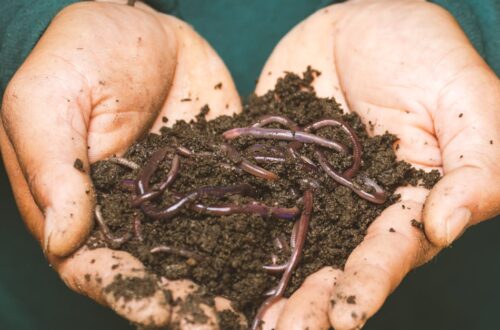Creating your very own window box is a delightful way to enhance your home’s curb appeal while enjoying the therapeutic benefits of gardening. In this guide, you’ll discover practical tips and step-by-step instructions on how to make window box arrangements that not only beautify your space but also suit your style and climate. From selecting the right plants to assembling the box itself, let’s explore how you can turn ordinary windowsills into stunning floral displays that brighten your day.
Choosing the Right Window Box
Choosing the right window box is essential for both aesthetics and plant health. Start by selecting durable materials such as wood, metal, or resin. A wooden box, treated against rot, adds charm, while metal provides a modern look. The size is equally important; ensure it fits your window dimensions while allowing enough depth for roots. A standard window box is typically 4 to 8 inches deep, accommodating a variety of plants. For optimal drainage, choose boxes with drainage holes. Remember, larger boxes retain moisture longer, which is beneficial in warmer months. Making informed choices can lead to flourishing plants and visual appeal!
Materials and Size Considerations
When considering materials for your window box, opt for rot-resistant wood, galvanized metal, or durable plastic. The right size should match your window sill, typically 24 to 36 inches wide. Plan for at least 6 to 8 inches in depth to support root growth and water retention.
Style Options for Your Home
Select a style that complements your home’s architecture. Classic wooden boxes work for traditional homes, while sleek metal or fiberglass options suit modern designs. Decorative elements like brackets can enhance the visual appeal, making your window boxes a standout feature.

Selecting Plants for Your Window Box
Choosing the right plants for your window box is crucial for creating a lively and colorful display. Start by selecting flowers suited for the current season; for spring, consider pansies and petunias, while summer favorites include geraniums and marigolds. These options ensure vibrant blooms that last throughout their respective seasons. Additionally, incorporating foliage plants like ferns or ivy can provide contrasting textures and greenery, enhancing the overall aesthetic. When considering how to make window box arrangements, aim for a balanced mix of colors, heights, and growth patterns to create a visually appealing design. Encourage friends and family to join your planting efforts, making it a rewarding experience!
Best Flowers for Different Seasons
In spring, opt for pansies and snapdragons. Summer asks for vibrant geraniums and petunias. Fall can be brightened with chrysanthemums, while winter can benefit from hardy cyclamen.
Foliage Plants for Added Texture
Foliage adds depth; consider ferns, ivy, or ornamental grasses to complement flowers and create a lush window box.

Preparing the Window Box
Creating a beautiful window box begins with gathering essential tools and supplies. You’ll need a window box planter, potting soil, fertilizer, and a selection of plants suited for your climate and light conditions. When starting, consider choosing a mix of colorful flowers and foliage for a vibrant display.
Equally important is ensuring proper drainage—this allows excess water to escape, preventing root rot. Use materials like gravel or screen mesh at the bottom of the box to facilitate drainage while keeping the soil intact. Following these initial steps will set the foundation for a thriving window box garden, allowing you to enjoy blooming results throughout the seasons. Don’t wait; start your outdoor oasis today!
Essential Tools and Supplies
Gathering necessary items such as potting soil, plant selections, and the window box itself is fundamental to a successful project.
Drainage Solutions
Implementing effective drainage solutions, like gravel or mesh, will prevent water accumulation and protect your plants’ roots.

Assembling Your Window Box
Creating your own window box can enhance your home’s curb appeal and provide a perfect spot for your favorite plants. Start by selecting durable materials like wood or composite for longevity. Cut your chosen material into the necessary dimensions, ensuring appropriate drainage holes for plant health. Incorporate a liner to retain soil moisture while preventing rot. Secure your box with outdoor-grade screws, ensuring a sturdy structure that can withstand outdoor conditions. Finally, fill your window box with quality potting soil and select vibrant flowers or herbs that suit your sunlight availability. These practical steps not only result in a functional planter but also beautify your space!
Step-by-Step Assembly Instructions
1. Choose the materials and dimensions. 2. Measure and cut the pieces. 3. Drill drainage holes. 4. Assemble using screws. 5. Line the interior. 6. Fill with soil and plant.

Planting and Maintenance Tips
To ensure a thriving window box, establish a robust care routine focusing on watering and fertilizing. A well-balanced watering strategy is critical; aim for soil that’s consistently moist but not soggy. Using a liquid fertilizer every 4-6 weeks during the growing season can significantly bolster plant health and promote vibrant growth. Additionally, to keep your plants looking their best, familiarize yourself with pruning and deadheading techniques. This practice encourages new blooms and prevents plants from becoming leggy. Regularly remove spent flowers and snip back unhealthy foliage, ensuring your window box stays lush and attractive. By following these tips, you’ll master how to create a flourishing window box that brightens your space and attracts admiration.
Watering and Fertilizing Guidelines
Consistent moisture is essential for window boxes. Water deeply but ensure the drainage is effective. Fertilize monthly with a high-quality nutrient solution.
Pruning and Deadheading Techniques
Remove spent flowers and trim back overgrown stems to promote new growth. This will keep your window box vibrant and encourage continual blooming.

Enhancing Window Box Aesthetics
Creating an appealing window box involves thoughtful color schemes and plant arrangements. Use complementary colors to create a vibrant display that draws the eye. For instance, pairing bright red flowers with lush green foliage can instantly uplift the aesthetic. Additionally, consider varying the plant heights and textures for visual interest. Don’t hesitate to explore seasonal plant rotations. Changing your window box plants with the seasons not only keeps your design fresh but also adapts to different climates, ensuring optimal growth and blooms. Engage with your surrounding environment by selecting flora that reflects the current season, which can also enhance curb appeal dramatically.
Color Schemes and Arrangements
Utilize complementary hues and diverse textures for a captivating window box. Experiment with different flower combinations to enhance visual appeal.
Seasonal Changes and Rotations
Regularly update your window box to reflect seasonal changes, promoting healthy plant life and refreshing aesthetics.

Common Mistakes to Avoid
When creating a stunning window box, avoiding common pitfalls ensures your plants thrive. One prevalent mistake is overcrowding your box, which can lead to competition for nutrients and water. Aim for a balanced arrangement, considering the mature size of each plant. Another critical factor is drainage; neglecting proper drainage can drown your plants and cause root rot. Ensure your box has holes at the bottom and include materials like gravel at the base to promote water flow. By steering clear of these mistakes, your window box will flourish, bringing vibrant beauty to your home. Dive into the gardening community and share your successes!
Overcrowding Your Box
Overcrowding is a significant issue in window box gardening. Planting too many varieties can stifle growth and lead to disease.
Neglecting Drainage Needs
Proper drainage is essential for plant health; ensure your window box has adequate holes and gravel to prevent waterlogging.

Conclusion
In summary, learning how to make window box arrangements can transform your living space and offer an enjoyable hobby that yields beautiful results. By following the steps outlined in this guide, you’ll cultivate a window box that not only complements your home but also brings you joy throughout the seasons.





